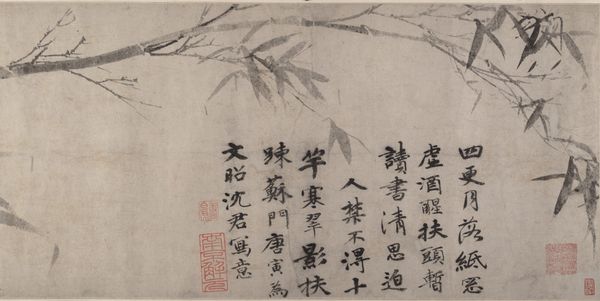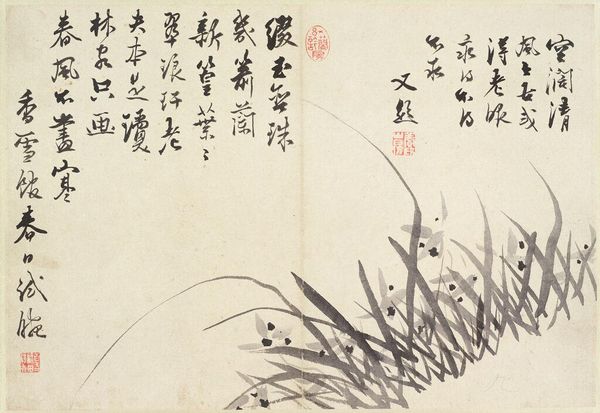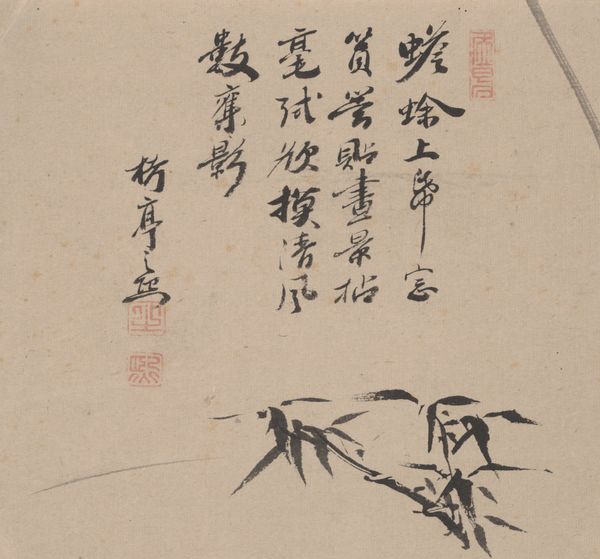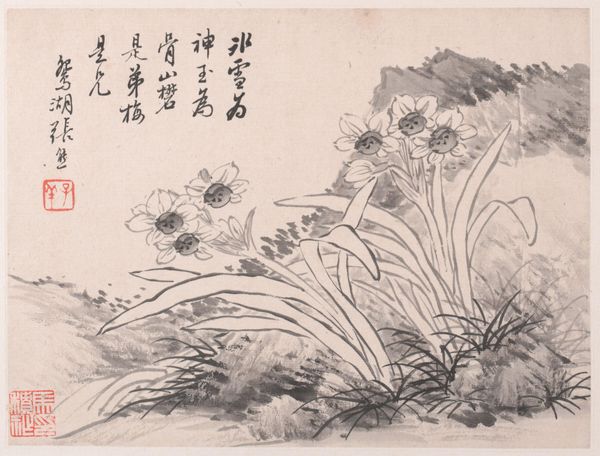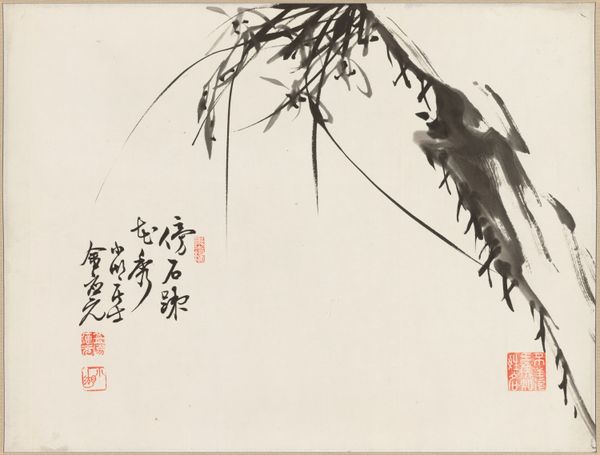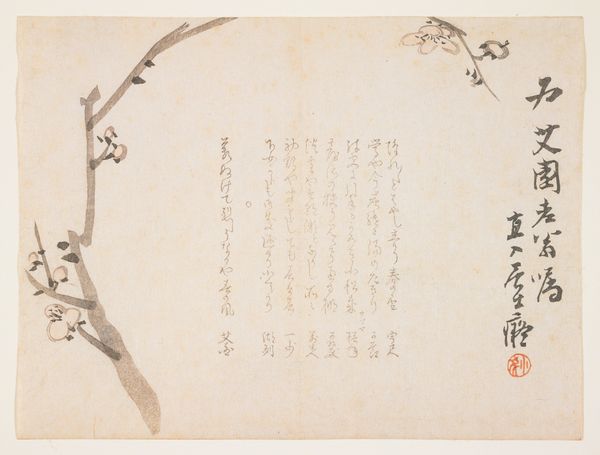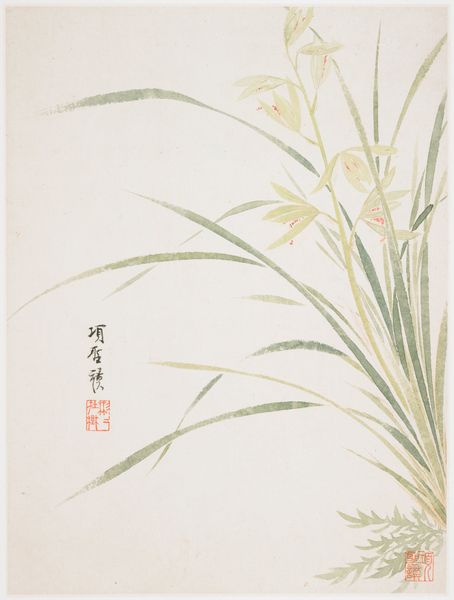
paper, ink-on-paper, ink
#
asian-art
#
landscape
#
japan
#
paper
#
ink-on-paper
#
ink
#
orientalism
#
calligraphic
#
abstraction
#
calligraphy
Dimensions: 14 1/8 x 209 1/2in. (35.9 x 532.1cm)
Copyright: Public Domain
Editor: This is "Orchids" by Ōtsuki Bankei, created around 1849, using ink on paper. It's part of the Minneapolis Institute of Art's collection. The strokes are so delicate, almost ethereal. It feels both simple and complex. How would you interpret this work, considering its cultural context? Curator: This work fits within a rich tradition of Japanese ink painting. The choice of orchids itself carries cultural weight. In East Asian art, orchids often symbolize refinement, nobility, and integrity. But beyond personal expression, think about the social role such paintings played. They weren’t simply decorative; they were often presented or exchanged among members of the literati. What do you make of the calligraphy alongside the orchids? Editor: I notice how much space the text takes up compared to the painted elements! Is it considered part of the art, then, and not just a caption? Curator: Absolutely. The calligraphy isn't just descriptive; it's integral. It’s an act of inscribing meaning, both poetic and social. Its placement and style reflects a specific set of aesthetic values appreciated within that artistic community. Who might have commissioned such a piece, and for what purpose? The fact it's in the Minneapolis Institute of Art says something about cultural exchange as well. Editor: That makes me think about how we view this piece differently now, separated from its original context and audience. Knowing who may have commissioned and collected the work shifts my perspective. Curator: Exactly. It moves the orchid from a pretty picture to an object deeply embedded within a network of social relations and artistic conventions. The orchid in itself isn't only something beautiful, but instead operates as something functional within a system of patronage. Editor: That makes me rethink how art can be appreciated just aesthetically, without understanding that social system. Curator: Precisely, understanding the politics of imagery and production adds another layer to our appreciation. Editor: This deeper understanding is truly illuminating. Thanks for showing me how socio-cultural background can shift meaning of artworks across centuries.
Comments
minneapolisinstituteofart almost 2 years ago
⋮
Since the time of Ch'u Yuan (332-268) in China, the orchid has symbolized the purity and uncompromising moral fortitude of scholars. O_tsuki Bankei was renowned as a Confucian scholar and served as an imperial tutor. He was dismayed when Japan was unable to resist demands from western countries to open its ports to international trade in the mid-19th century. For a time he was even imprisoned for his involvement with the resistance forces. It is appropriate, therefore, that he often chose to paint orchids. Here, Bankei created a handscroll nearly fifteen feet in length showing clumps of freely brushed orchids interspersed among poetry. Despite the turmoil Bankei experienced, his verses are lyrically aloof. The first poem on the far right may be translated in the following manner: The winds of spring have already blown,The streets are filled with the fragrance of orchids from bamboo basketsWhy don't we sell them to people for a trifle,Instead of letting the mountain deer feed upon them'
Join the conversation
Join millions of artists and users on Artera today and experience the ultimate creative platform.
